A polygon (or poly) object in MSV is a 3D object that represents a closed polygon with a thickness or height. It provides structural, aesthetic, or ornamental support in the simulation environment. However, it does not interact with vehicle behavior.
Poly objects can serve various purposes:
Since MSV does not include predefined road objects, Ways are drawn, and streams are set up on those Ways. Poly surfaces can be used to represent the road surface beneath these operations.
For layout designers, poly objects add functional value. The program checks if any vehicle streams intersect with polygon objects, enabling designers to verify whether medians and traffic islands are appropriately designed. Simulations can be used to identify and correct vehicle paths or polygon layouts to ensure compatibility with the modeled area. This is a functional benefit of including polygon objects in the scene.
Below are some examples of how polygon objects serve their purposes:
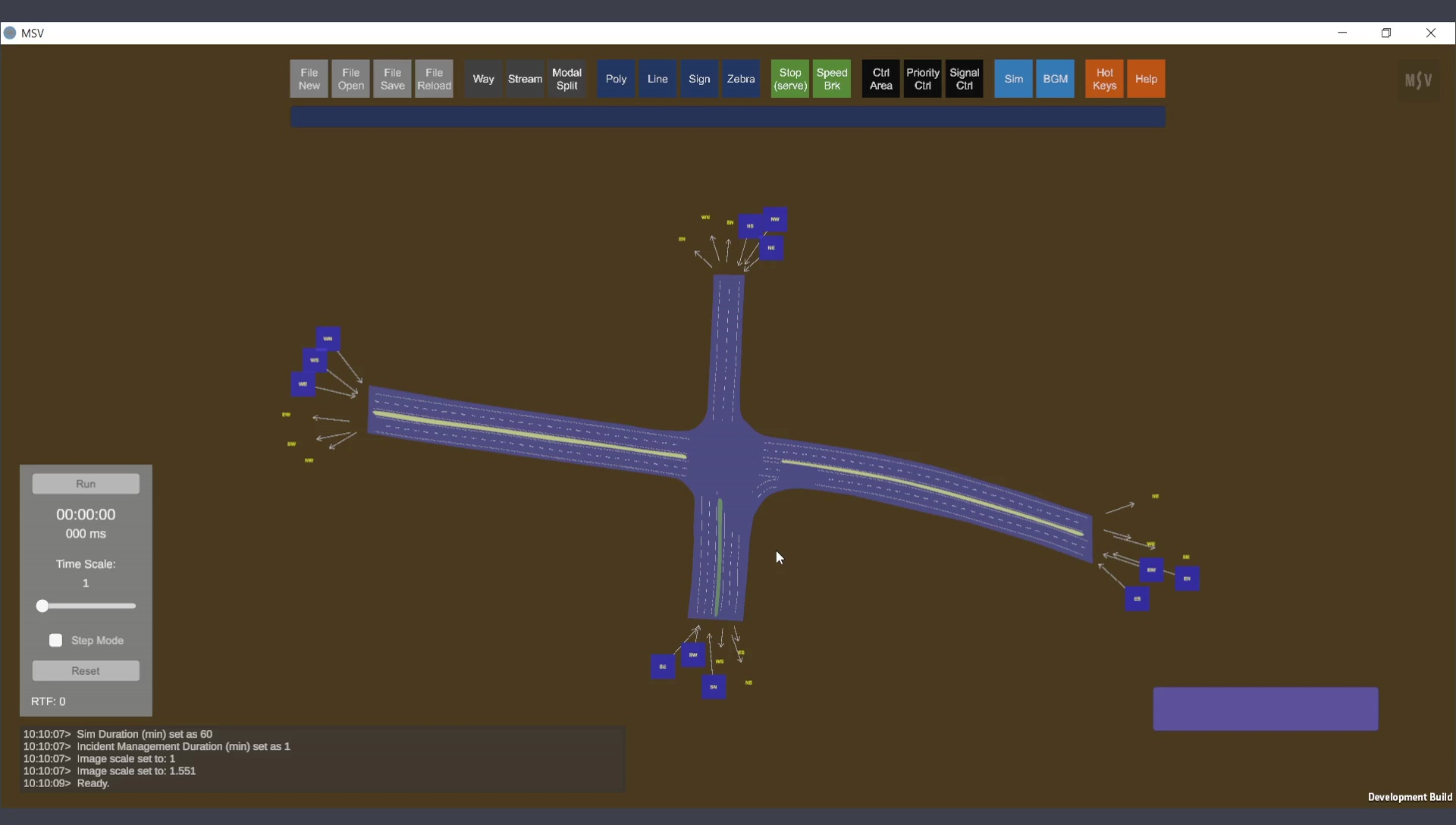
Polygon surface acting as a common pavement base for all roads (Ways in MSV).
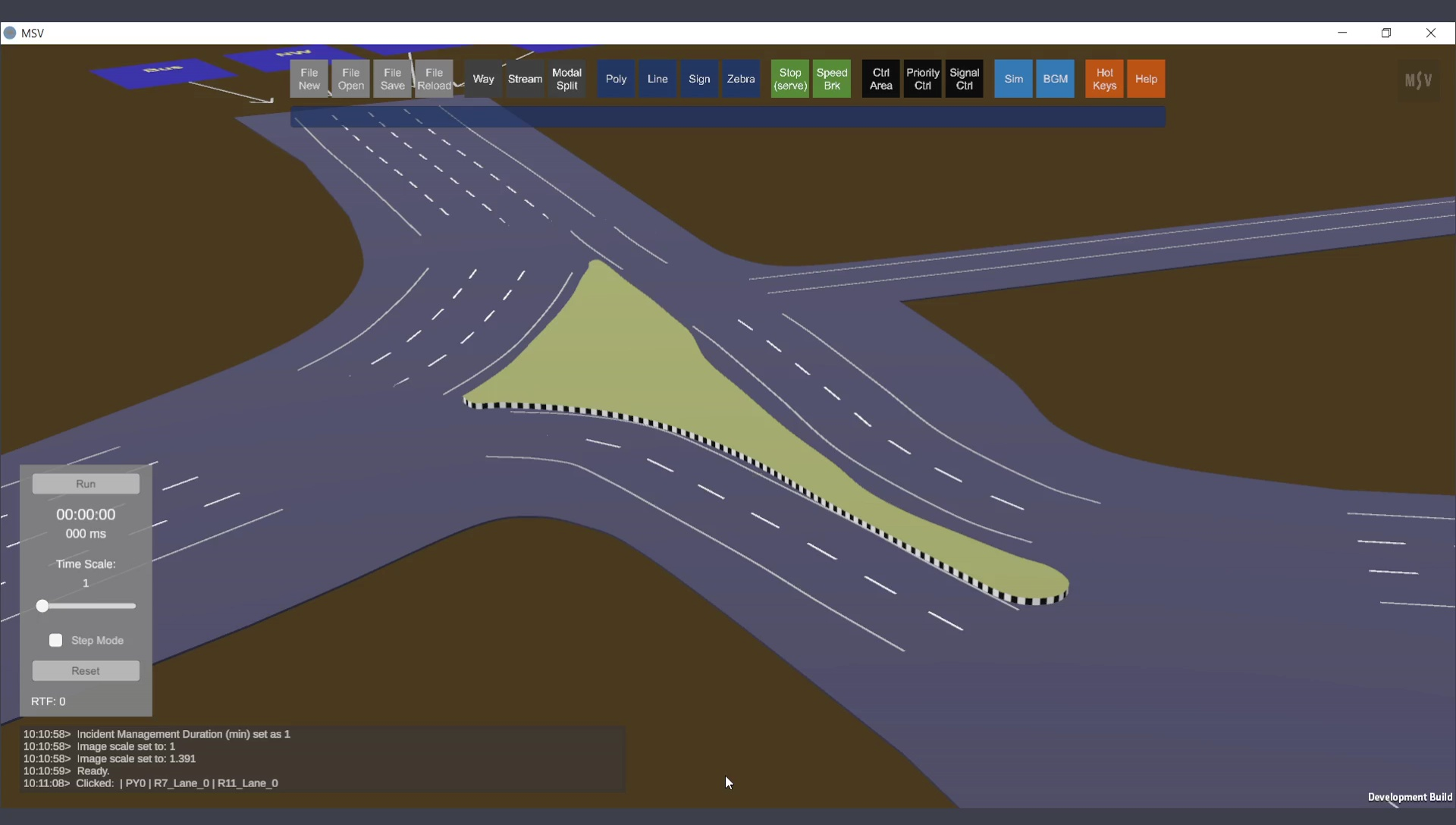
Traffic island with kerb markings (black and white strips on the sides).
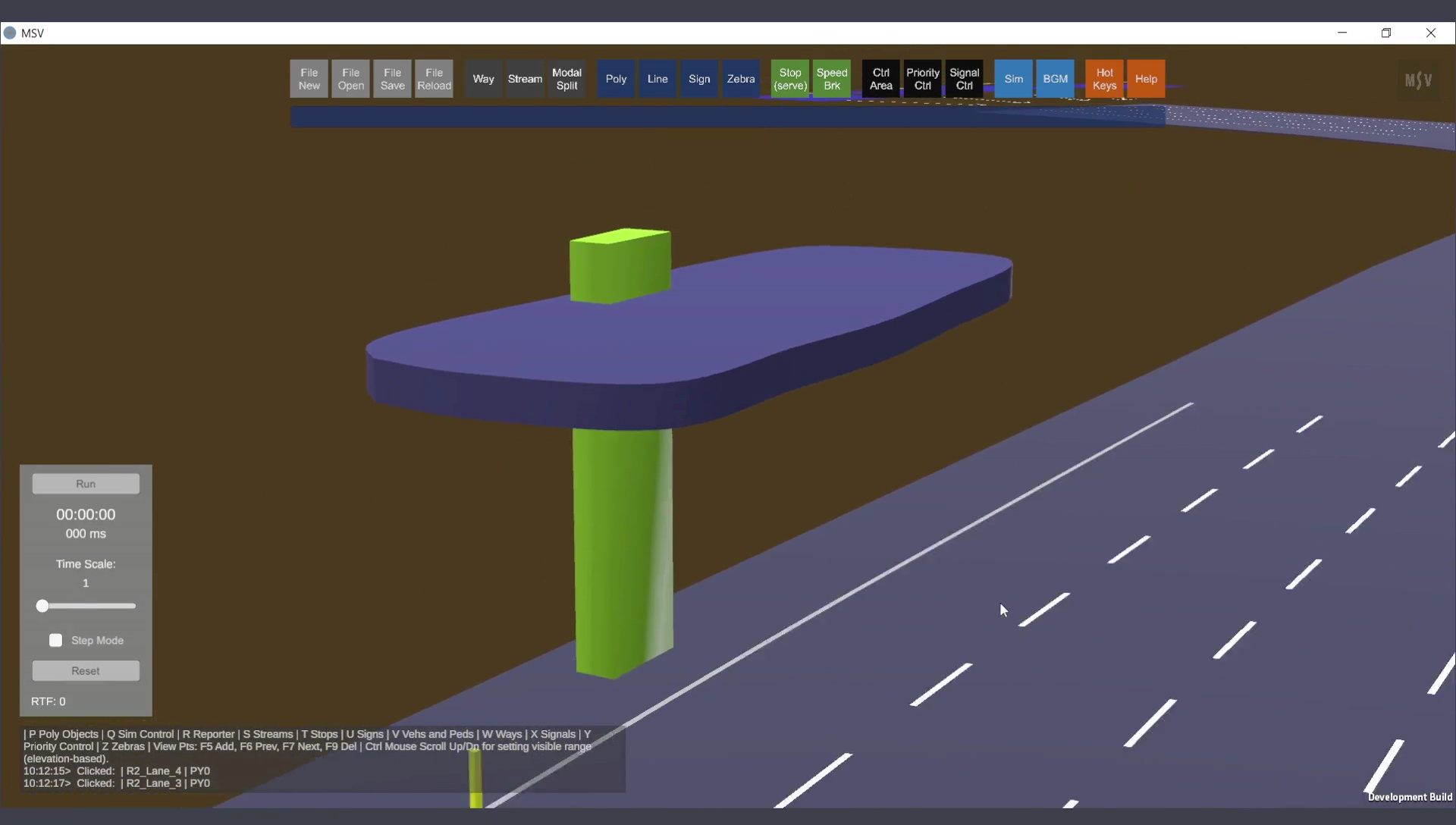
Creative shapes representing a bus stand. The column and roof-slab are poly objects.
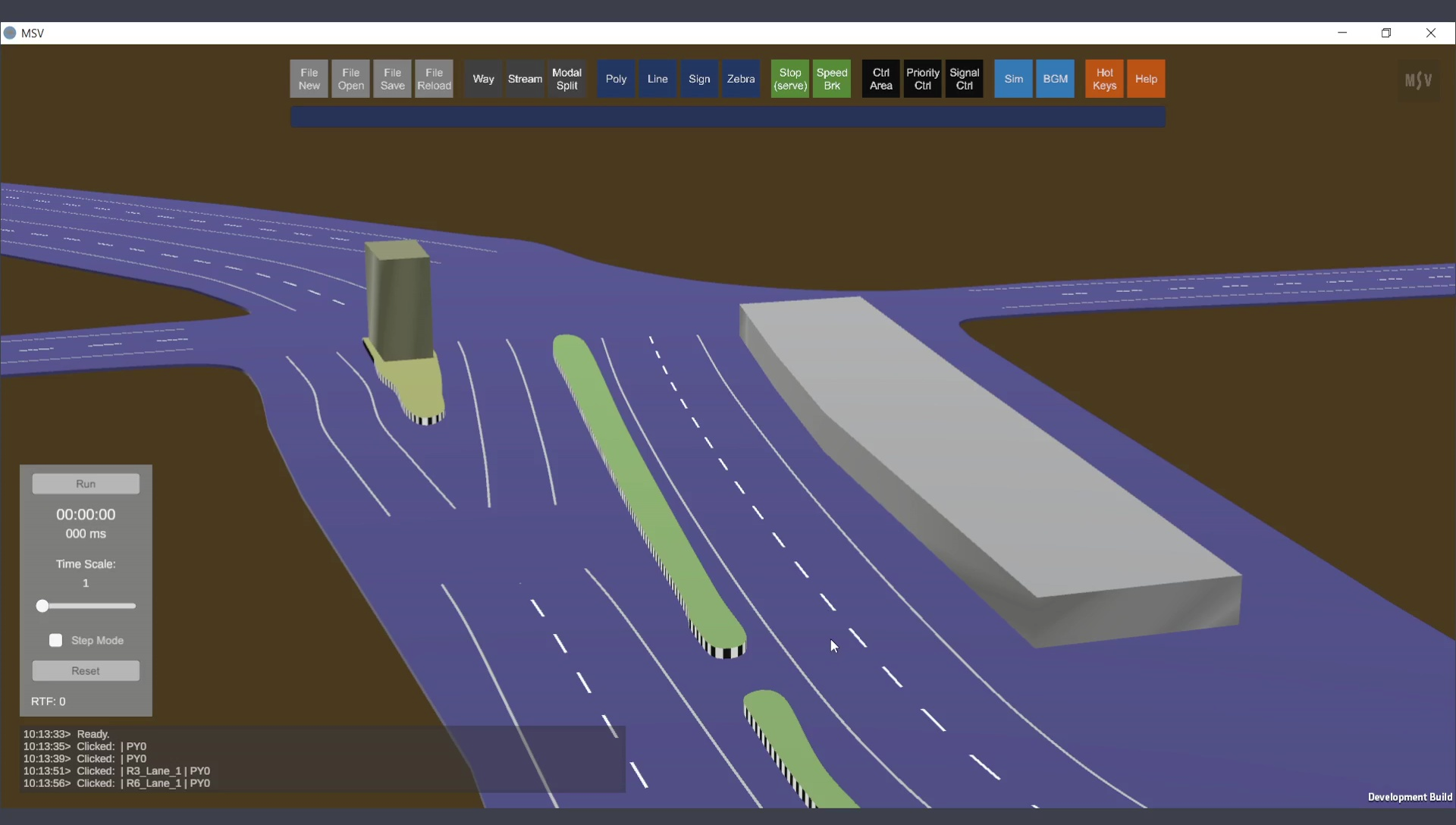
Road medians along the center of the road and blocks representing buildings or sheds.
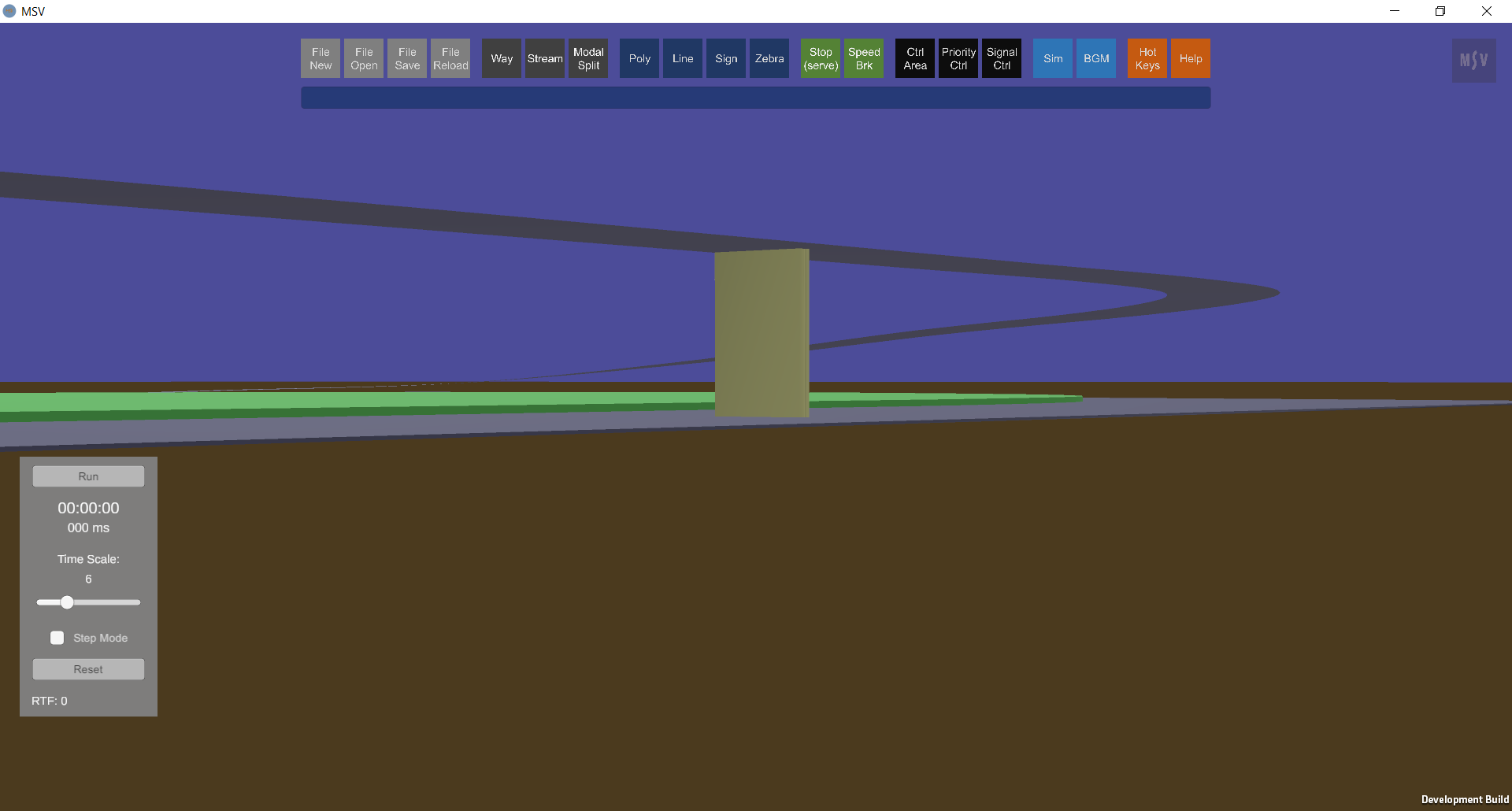
Representation of supporting pillars or column walls under a bridge or flyover.
Polygon objects can be toggled On or Off to inspect other objects in the scene. Alternatively, only the boundary or perimeter of the polygon can be displayed without showing the full 3D shape or surface. This option is useful for editing objects inside the polygon, as demonstrated below:
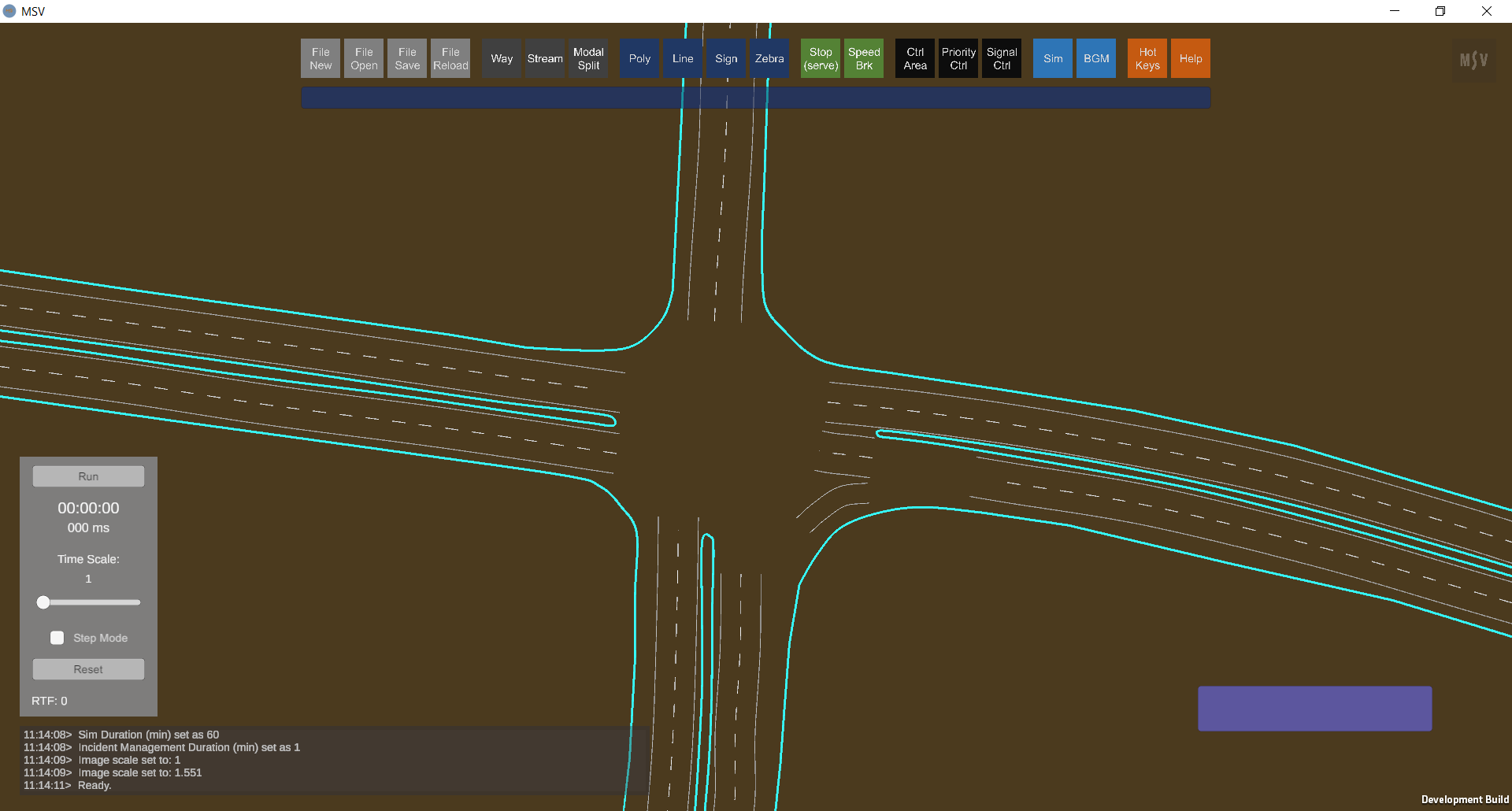
Visibility option for polygon objects: showing the perimeter only.
Poly objects can include both straight and curved portions. The Poly Creation section of the manual describes the procedures for creating and editing polygon shapes in detail.